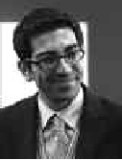HealthManagement, Volume 13 - Issue 1, 2013
A demographic survey was conducted amongst French radiology residents
in order to investigate their expectations regarding their training, fields of
interest, future career, and exercising their profession. This survey was aimed
at anticipating reforms in radiology and at foreseeing future demographic
changes, so as to adapt medical residents' training and the global medical
system to these new realities.
Materials and Methods
A multiple-choice survey of 19 questions was developed in three categories: demography (gender, year of residency, and city of training), training and future practice. The questions about training were aimed at finding out the residents' expectations regarding their residency and fellowship in global radiology training, as well as in subspecialties. The questions about future practice were not only intended to reveal the residents' willingness to practise general radiology or some special field of it, but also their general career goals, type of desired practice, and the technologies the future radiologists wanted to use in their upcoming practice.
612 French residents out of 920 were contacted via email. 160 respondents completed all the survey questions (26 percent response rate).
The residents had the opportunity to justify each answer and could also give their personal opinion at the end of the survey. These comments helped us to better understand the reasons underlying the young radiologists' answers as well as the possible implications for the healthcare system.
Respondents
The proportion of the respondents was equally distributed among the five years of residency. The male versus female distribution followed the current residents’ demographic proportions with 38 percent of the respondents being women. This confirms the known trend towards feminisation of radiology (Baker et al. 2006), which is associated with increased interest in part-time practice and in being employed rather than independent.
Residency as Global Initial Training
The respondents considered residency as a global initial training that should include all, or at least most of, the radiology domains and subspecialties. Most residents (50 percent) want to have a comprehensive general training and to acquire two or three areas of expertise, while 35 percent request only general training. For those willing to get a subspecialisation, the main fields of interest are musculoskeletal (43 percent), gastrointestinal (31 percent), neuroradiological (25 percent), and breast and gynaecological imaging (23 percent).
The desire of the radiologist to be at the centre of patient care is stated as one of the reasons for interest in general radiological training. Young radiologists are willing to be able to respond to questions and work with all clinicians and surgeons in general and emergency cases. Some respondents also justified their choice by the motivation of being competent in the whole field of the speciality, being able to have a varied practice and work in private generalist clinics.
However, the growth of medical knowledge, techniques and investigations makes it impossible to have deep expertise in each organ subspecialisation. Young radiologists are acutely aware of that, and, along with the general radiology education, they want to become experts in a specific couple of domains.
Fellowship as Extension of Residency
Fellowship, which is not mandatory in France, and usually lasts for
two years, is considered an extension of residency aimed at completing general
education. Only three percent of respondents are not willing to complete a
fellowship. The distribution of subspecialties choices is comparable with the
fellowship–residency choice distribution, with the same trend of willingness to
get general training and two to three subspecialties. Only 24 percent ofthe
residents would like to have a single-specialty fellowship.
Future Practice
After having completed their fellowship, 83 percent of young radiologists prefer to have a general practice (see Figure 2), with one to three subspecialties, especially in digestive (51 percent), musculoskeletal (49 percent), neuroradiology (34 percent), and breast imaging (30 percent) (see Figure 3). Only five percent of the radiologists would like to have a single subspecialty practice
Interventional Radiology
The development of interventional radiology at the interface between diagnosis and treatment has added a new dimension to the specialty. As many as 15 percent of residents want to learn interventional imaging methods during their residency, and three percent would like their residency training to be mostly oriented at interventional practice. Twenty percent of the residents would choose their fellowship in interventional radiology. Regarding their future practice, about 30 percent of the young radiologists would like to use vascular interventional imaging techniques, and 45 percent want to practise non-vascular interventional imaging. The strongest interest is shown in non-vascular interventional radiology such as oncologic interventional radiology, e.g. biopsy, which is usually part of the global patient investigation (O’Neill et al. 2011), while vascular interventional radiology, being a more specialised field, requires more time investment and sometimes leaves no time for any other work.
Paediatric Imaging
While interest in interventional imaging is increasing, there is a strong decrease in interest in paediatric imaging, both in partand full-time practice. Only seven percent during residency and eight percent during fellowship are interested in training in paediatrics. Only three percent of young radiologists (five percent of the women respondents) want this field to become their only future practice while ten percent would agree to practise it along with other subspecialties.
Imaging Techniques
Imaging techniques are developing fast and interest in new technologies is high (see Figure 4). Interest in MRI (92 percent) and CT (88 percent) is the most significant, followed by ultrasound (77 percent). The interest in conventional radiography is markedly low (59 percent). Women are more interested than men in ultrasound (89 percent).
Career Interests
Interest in an academic career is lower in radiology compared to other specialties. Only 12 percent of respondents are interested in an academic career: of these interest is higher in Paris (20 percent) than in the provinces. The lack of interest in an academic career is justified by the need for great self-investment and by the significant difference between salaries in public hospitals and in private practice, the latter being much higher. The lower fraction of young radiologists in provinces attracted by an academic career can be partly explained by the higher expectations regarding their quality of life (Applegate 2005), or by the lower number of academic opportunities there.
There is increasing interest in the hospital sector: 27 percent of respondents would like to have an exclusive hospital practice, 40 percent would choose a part hospital and part private career, while only 20 percent see themselves working in the private sphere only. Among the latter, only one percent is seeking a small general practice, whereas over 40 percent prefer a large radiology group and 60 percent are willing to work in a private hospital to have everyday access to CT and MRI scanners. These results can be related to several factors such as the technology evolution, accompanied by the loss of interest in small radiology organisations, where only ultrasound and standard radiology can be practised, as well as by the increased complexity of radiology practice, pushing radiologists to group in order to increase their expertise. The higher interest in the hospital sphere is partially related to the growing feminisation of the profession (women prefer a partly hospital and partly private career 20 percent more than men). There is also an increased interest in practising medicine as an employee. This interest is higher in the female population with 60 percent ready to consider this possibility, which can be accounted for by increasingly valued stability, family responsibilities, and personal satisfaction (Cronan 2004).
Conclusions
New trends in practising radiology and the emergence of new radiological
techniques affect the expectations of the French residents regarding their
current education and the way they see their future career.
We have found that the strongest trends are the desire for having several career opportunities by orienting to mixed private and public practice as well as a great interest in getting a general training and becoming a general radiologist with expertise in one to three subspecialties. As far as subspecialties are concerned the biggest changes in preference are for interventional radiology (IR) (especially non-vascular IR) at the top, and for paediatric radiology at the bottom.
The results of this survey may be of use in implementing changes in training young radiologists (residents and fellows) and in organising hospital- and private-networks practice. These results should be also considered while organising the healthcare system, as the residents of today are going to be the active participants of this system in a couple of years. Thus health policy leaders should take these results into account while evaluating the appropriate number of radiologists needed in the near future.
Figure 1: Would you like to have general training during your residency?

Figure 2: After your training would you like to practise all the subspecialities?

Figure 3: Which specialities would you like to practise after your training?









